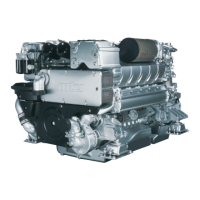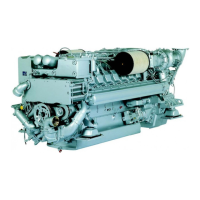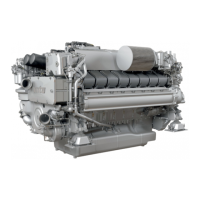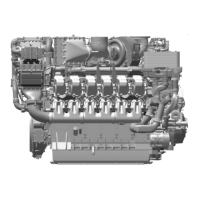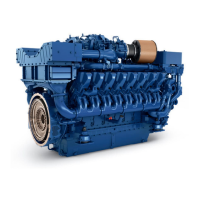5.8 Emergency engine shutdown
WARNING
Exhaust gases are harmful to health and may cause cancer.
Risk of poisoning and suffocation!
• Keep the engine room well-ventilated at all times.
• Repair leaking exhaust pipework immediately.
CAUTION
Shutting down from full-load operation may cause hot water to escape from the expansion tank.
Risk of scalding!
• Allow engine to cool down.
• Wear protective clothing, protective gloves, and safety goggles / safety mask.
NOTICE
An emergency stop subjects the engine system to an extremely high load.
Risk of overheating, damage to components!
• Trigger an emergency stop only in emergency situations.
Emergency engine shutdown
Item Action
Emergency stop pushbutton Press EMERGENCY STOP button (→ Documentation of the vehicle/plant
manufacturer).
• Engine is stopped by disconnecting the power supply to the ECU;
• Emergency-air shutoff flaps close (if applicable);
• Signalization (e.g. by horn, beacon) is activated.
Tripped fuse
Power failure for an extend-
ed time
A power failure leads to an engine shutdown.
• The fuel system remains under high residual pressure;
• The blank-shot function cannot be performed because there is no power
supply.
After emergency engine shutdown
Item Action
Control cabinet, operator
station etc. (depending on
manufacturer)
Press pushbutton for alarm acknowledgment.
• Audible and visual signalization stops.
Engine Manually open emergency-air shutoff flaps (if provided).
• Switch on ECU power supply.
• Engine is ready for starting.
HP system Energize injectors (for pressure release in HP system using the function
„Blank Shot Afterrun“)
• Switch on ECU power supply.
• Blank Shots are carried out (requires approx. 20 to 30 s.)
72 | Operation | MS15054/03E 2018-07
TIM-ID: 0000062460 - 005

